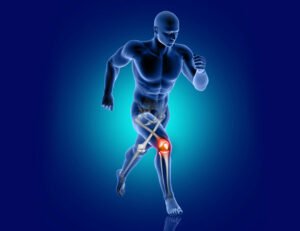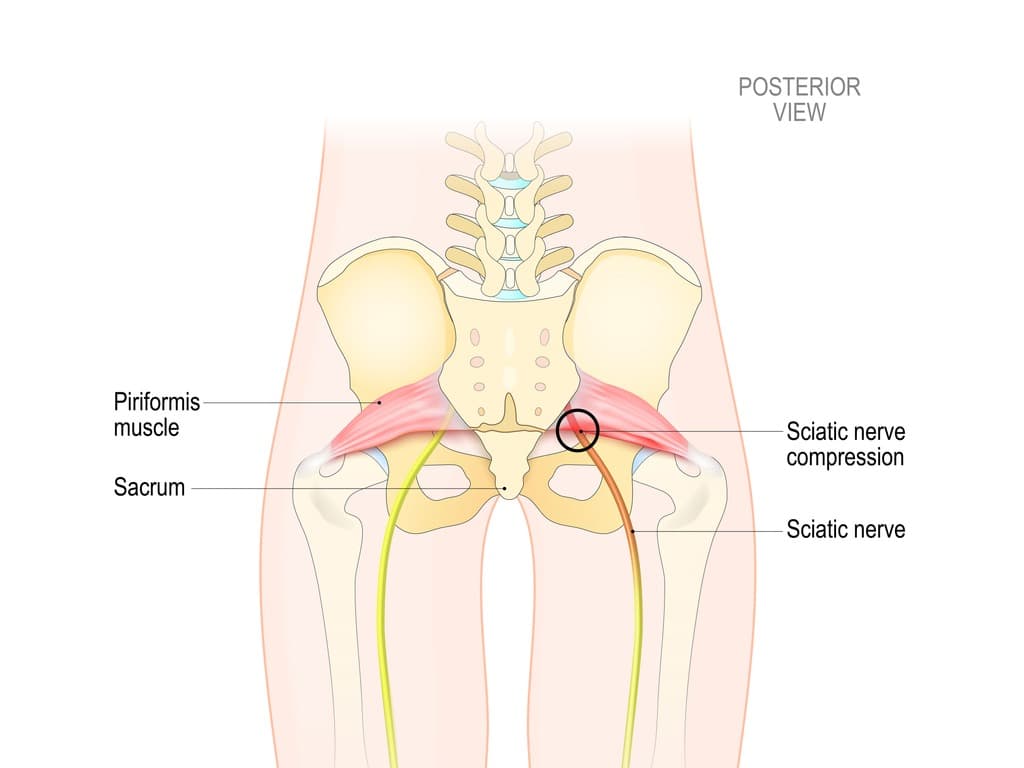Living with chronic pain can significantly impact one’s quality of life, especially when it involves conditions like sciatica and knee pain. These are prevalent issues that affect people of all ages and backgrounds. While they may seem unrelated, there are instances where they can be connected. In this article, we will delve into the world of sciatica and knee pain, understanding their causes, symptoms, and potential treatments. By the end, you’ll be equipped with the knowledge to manage and find relief from these discomforts.
Contents
Understanding Sciatica
Sciatica is a medical condition characterized by pain that radiates along the path of the sciatic nerve. The sciatic nerve is the largest nerve in the human body and is formed by several nerve roots that originate from the lower back and merge in the pelvis. It extends down each leg, running through the buttocks, along the back of the thighs, and down to the feet.
Sciatica occurs when there is irritation or compression of the sciatic nerve, usually due to one of the following reasons:
- Herniated Disc: A herniated or slipped disc occurs when the soft inner material of a spinal disc protrudes through the tougher outer layer and presses against the sciatic nerve.
- Spinal Stenosis: Spinal stenosis is the narrowing of the spinal canal, which can put pressure on the sciatic nerve as it exits the spine.
- Piriformis Syndrome: The piriformis muscle, located in the buttocks, can irritate or compress the sciatic nerve, leading to sciatica.
- Spondylolisthesis: This condition occurs when one vertebra slips forward over another, potentially pinching the sciatic nerve.
- Degenerative Disc Disease: The natural aging process can cause wear and tear on spinal discs, leading to their gradual degeneration and possible compression of the sciatic nerve.
- Tumors or Infections: Though rare, tumors or infections in the spine can affect the sciatic nerve and cause sciatica.
Understanding Knee Pain

Knee pain refers to any discomfort, ache, or soreness experienced in or around the knee joint. The knee is a complex joint that connects the thigh bone (femur) to the shinbone (tibia) and is responsible for supporting body weight, facilitating movement, and providing stability during various activities like walking, running, and jumping.
Knee pain can vary in intensity and may be caused by a wide range of conditions and injuries, including:
- Knee Osteoarthritis: A degenerative joint disease where the protective cartilage within the knee joint wears down over time, causing pain, swelling, and stiffness.
- Knee Rheumatoid Arthritis: An autoimmune disease that can affect the knee joint, leading to inflammation, pain, and damage to the joint lining.
- Knee Bursitis: Inflammation of the bursae, small fluid-filled sacs that cushion the knee joint, resulting in localized pain and swelling.
- Tendinitis: Inflammation of the tendons around the knee, which can be caused by overuse or injury.
- Meniscus Tears: Tears in the meniscus, which are cartilage structures that act as shock absorbers in the knee joint.
Sciatica and Knee Pain: The Connection
Sciatica and knee pain can be related due to the anatomical and neurological connections in the lower extremities. While they are distinct conditions, sciatica can sometimes lead to knee pain, and knee problems can also cause or exacerbate sciatica symptoms. Let’s explore the connection between sciatica and knee pain:
Sciatica and Knee Pain: Sciatica: As previously mentioned, sciatica is a condition characterized by irritation or compression of the sciatic nerve, which runs from the lower back down the back of each leg, passing behind the knee.
When the sciatic nerve is affected, it can cause pain, numbness, tingling, and weakness that radiates from the lower back through the buttocks, down the
Diagnosing Sciatica and Knee Pain Together

Diagnosing sciatica and knee pain together involves a comprehensive evaluation to determine the underlying causes of both symptoms. The process typically includes the following steps:
Medical History: The healthcare provider will begin by taking a detailed medical history, including asking about the specific symptoms, their onset, duration, and any factors that worsen or alleviate the pain. They will also inquire about any previous injuries, medical conditions, or treatments that may be relevant.
Physical Examination: A thorough physical examination will be performed to assess the affected areas, including the lower back, hips, knees, and legs. The doctor will look for signs of nerve irritation, joint inflammation, or structural abnormalities.
Imaging Tests: In many cases, imaging tests are used to visualize the structures of the spine and knee joint and help identify the causes of sciatica and knee pain. Common imaging tests include:
- X-rays: Useful for detecting bone abnormalities, fractures, or arthritis in the knee joint or lumbar spine.
- Magnetic Resonance Imaging (MRI): Provides detailed images of the spinal structures and knee joint, helping to identify issues such as herniated discs, spinal stenosis, knee ligament injuries, meniscus tears, etc.
- Computed Tomography (CT) Scan: Offers detailed cross-sectional images of the spine and knee, helpful in identifying bony abnormalities.
Nerve Studies: If sciatica is suspected, nerve studies such as electromyography (EMG) and nerve conduction studies (NCS) may be performed to assess the function of the sciatic nerve and identify any nerve damage or compression.
Comprehensive Treatment for Both Conditions
The treatment for both sciatica and knee pain will depend on the underlying causes and the severity of the conditions. Here are some general treatment approaches that can help manage both conditions:
Rest and Activity Modification:
- Adequate rest is essential to allow the body to heal. Avoid activities that worsen the pain, especially high-impact exercises or movements that strain the lower back and knee joints.
Pain Medications:
- Over-the-counter pain relievers like acetaminophen or NSAIDs (e.g., ibuprofen) can help manage pain and reduce inflammation. Furthermore, follow the recommended dosages and consult a healthcare professional if you have any contraindications or concerns.
- A physical therapist can design a personalized exercise program to strengthen the muscles around the knee and lower back, improve flexibility, and correct any postural or gait issues.
Natural Remedies and Home Care

Natural remedies and home care can complement conventional treatments and help manage sciatica and knee pain. Here are some natural remedies and self-care measures that may provide relief:
Gentle Exercise:
Low-impact exercises like swimming, walking, or stationary cycling can help improve blood flow, strengthen muscles, and reduce pain in both the lower back and knees. Furthermore, avoid high-impact activities that may worsen the pain.
Yoga and Stretching:
Practicing gentle yoga poses and regular stretching can improve flexibility, relieve muscle tension, and support the spine and knee joint health.
Heat and Cold Therapy:
Applying a warm compress or heating pad to the affected areas can help relax muscles and reduce pain. Furthermore, cold packs can be used to alleviate inflammation and numbness.
Turmeric and Ginger:
Turmeric and ginger have natural anti-inflammatory properties. Incorporate them into your diet or try drinking turmeric or ginger tea to help reduce inflammation and manage pain.
Seeking Professional Advice
Seeking professional advice is a crucial step in managing sciatica and knee pain effectively. Furthermore, if you are experiencing persistent or severe pain in your lower back, legs, or knees, it’s important to consult with a healthcare professional for a proper evaluation and personalized treatment plan. Here are the steps to seek professional advice:
Primary Care Physician:
- Start by scheduling an appointment with your primary care physician. They can conduct a comprehensive assessment, review your medical history, perform a physical examination, and order any necessary tests to identify the underlying causes of your symptoms.
Referrals to Specialists:
- Depending on the initial evaluation, your primary care physician may refer you to specialists who have expertise in managing conditions related to sciatica or knee pain. These specialists may include orthopedic surgeons, neurologists, rheumatologists, or physical therapists.
Communicate Symptoms and Concerns:
- During your medical appointments, be sure to communicate all of your symptoms and concerns, including the location, severity, and any factors that worsen or alleviate the pain. Providing a detailed account of your symptoms can help the healthcare professional make an accurate diagnosis and create an effective treatment plan.
Conclusion
Sciatica and knee pain can significantly disrupt daily life, making it essential to understand the conditions and explore various treatment options. By addressing these issues promptly and seeking professional guidance, individuals can find relief and improve their overall well-being. Remember, pain should not be accepted as an inevitable part of life, and there are effective ways to manage and overcome it.
Physical Therapy helps patients recover from pain. If you’re experiencing Foot, Back, Shoulder, Knee, Neck, Elbow, Hip, or Arthritis pain, a physical therapist at PhysioMantra can help: Book an online physical therapy session.



